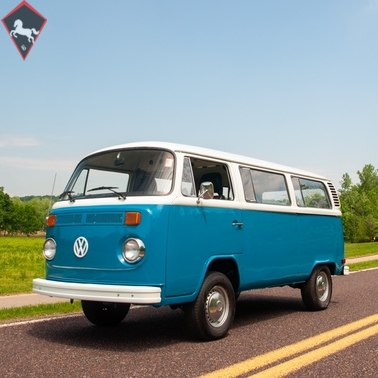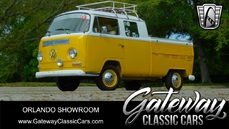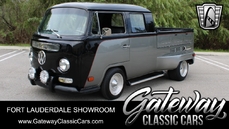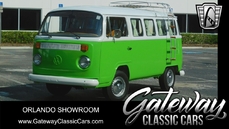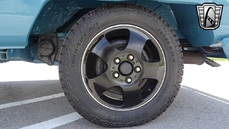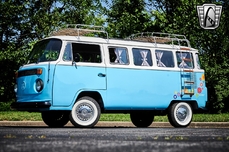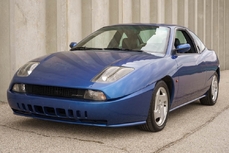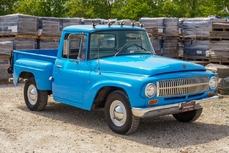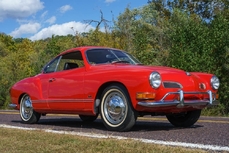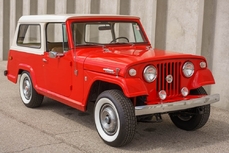Volkswagen Typ 2 Bay window 2.0L Flat Four-cylinder 1977
General description :
1977 Volkswagen Transporter Bus
New Reef Blue (code L57H) body paint with Pastell White roof (code L90D)
Redone Black Leatherette interior (code 50)
2.0L flat four-cylinder engine
Four-speed manual transmission
Rarely-seen ceiling-mounted air-conditioning
VDO gauges and Hella headlights
Volkwagens iconic Bus is undergoing a strong resurgence as more and more of these classic VW buses hit the classic car market as demand increases. Here at MotoeXotica Classic Cars, we have a handsome bright Reef Blue 1977 transporter bus that is ready for a new home.
Finished in recently restored Reef Blue (code L57H) with white roof and trim, the finish is in overall excellent order, with just a few minor blemishes visible at close range. The glass panels are clear and intact, as are the vans lights. The bays bodywork is straight and solid.
The engine bay is in good shape, the vans cargo area above the engine bay looks good and the bumpers fit well to the vans body. This VW rolls on Hankook Optimo H724 radials, 215/70R14 at all four corners. Each tire is mounted a steel wheel with factory, vented wheel covers. The tires are in good order while the wheel covers are in very good condition.
Out back is a 2.0L flat four-cylinder mill mated to a four-speed manual transmission. This particular model has the ceiling-mounted air conditioning which in fact is inoperable. Rather than using dash vents like most vehicles, the compressor and vents are mounted overhead, which allows the cold air to fall and drape over the driver and passengers.
Inside, the van has a redone black leatherette interior (code 50). The front buckets, middle bench and rear bench seats are in excellent shape. While theres no carpet, the vehicles mats look good. The white headliner is in good shape while the original, two-spoke steering wheel is in great shape but the fuel gauge is inoperable. The instrument panel is in good condition while the inner door panels are in very good order.
Competition to this Bay in 1977 included Chevrolets G10 Van, Dodges B-Series Ram Van, Fords Econoline Van and GMCs VanDura.
If youre seeking to enjoy leisurely commuting or prefer to take the scenic route wherever you go because youre not in a hurry, you should come by MotoeXotica Classic Cars today to check out this Late Bay.
This van is currently located at our facility in St. Louis, Missouri. Current mileage on the odometer shows 25,041 miles and is not actual mileage. It is sold as is, where is, on a clean and clear, mileage exempt title. GET OUT AND DRIVE!!!
Please Click Here to View Our YouTube Video!
OR Copy & Paste the Link Below to Watch the Video:
youtu.be/6goF5Zw12eU
VIN: 2272014699
https://www.motoexotica.com/inventory/listing/1977-volkswagen-bus/
1977 Volkswagen Typ 2 Bay window 2.0L Flat Four-cylinder is listed sold on ClassicDigest in Fenton (St. Louis) by for $26900.
Car Facts
Car type : Car Make : Volkswagen Model : Typ 2 Bay window Model Version : 2.0L Flat Four-cylinder Engine size : 2.0 Model Year : 1977 Sub type : Van Location : Fenton (St. Louis)
Sold
Seller Information
Sold
People who viewed this Volkswagen Typ 2 Bay window also viewed similar Volkswagen listed at ClassicDigest
Other cars listed for sale by this dealer
About Volkswagen
The Volkswagen story is indeed an intriguing tale of innovation, resilience, and post-war revival, marked by various models that have become iconic in automotive history.The People's Car (Volkswagen): Initially envisioned by Adolf Hitler in the 1930s as a "people's car" or "Volkswagen" in German, the idea was to create an affordable and practical vehicle for the German people. This concept led to the development of the Volkswagen Beetle (or the Type 1), designed by Ferdinand Porsche.
Post-War Challenges: After World War II, Volkswagen faced significant challenges. The factory was heavily damaged, and the brand's association with the Nazi regime led to a lack of interest in the car in some regions.
British Intervention - The British Army & Ivan Hirst: The British Army took control of the factory in the immediate post-war period. Major Ivan Hirst, a British Army officer, played a crucial role in reviving Volkswagen. He recognized the potential of the Beetle and advocated for its production, convincing the British military to order several thousand cars. This decision helped jumpstart the brand's revival.
Export Success and the Beetle's Global Appeal: The Beetle gained popularity not only in Germany but also globally, becoming an icon of affordable motoring. Its simple, reliable design and unique appearance made it a favorite among consumers worldwide.
Model Evolution: Over the years, Volkswagen introduced various models alongside the Beetle, each contributing to the brand's growth:
Type 2 (VW Bus or Transporter): Introduced in the 1950s, it became an iconic symbol of the hippie movement in the 1960s, loved for its spaciousness and versatility.
Golf (Rabbit in the U.S.): Launched in the mid-1970s, the Golf (or Rabbit in the U.S.) marked a shift towards front-wheel-drive, modern design, and hatchback practicality, becoming a cornerstone of the brand's success.
Passat, Jetta, and Other Models: Volkswagen expanded its lineup with models like the Passat and Jetta, catering to different market segments.
Challenges and Innovations: Despite success, Volkswagen faced challenges, including quality issues in the 1970s. However, the brand continued to innovate and develop new models and technologies.
Rise of the GTI and Global Expansion: The 1980s saw the rise of the iconic Golf GTI, a high-performance version that sparked the hot hatch trend. Volkswagen also expanded its global presence during this period.
The British intervention in reviving Volkswagen after World War II played a pivotal role in the brand's resurgence. While there might have been some tensions or competition among automotive companies in the 1950s and 1960s due to Volkswagen's post-war success, the brand's ability to produce innovative and popular models solidified its place in automotive history.
